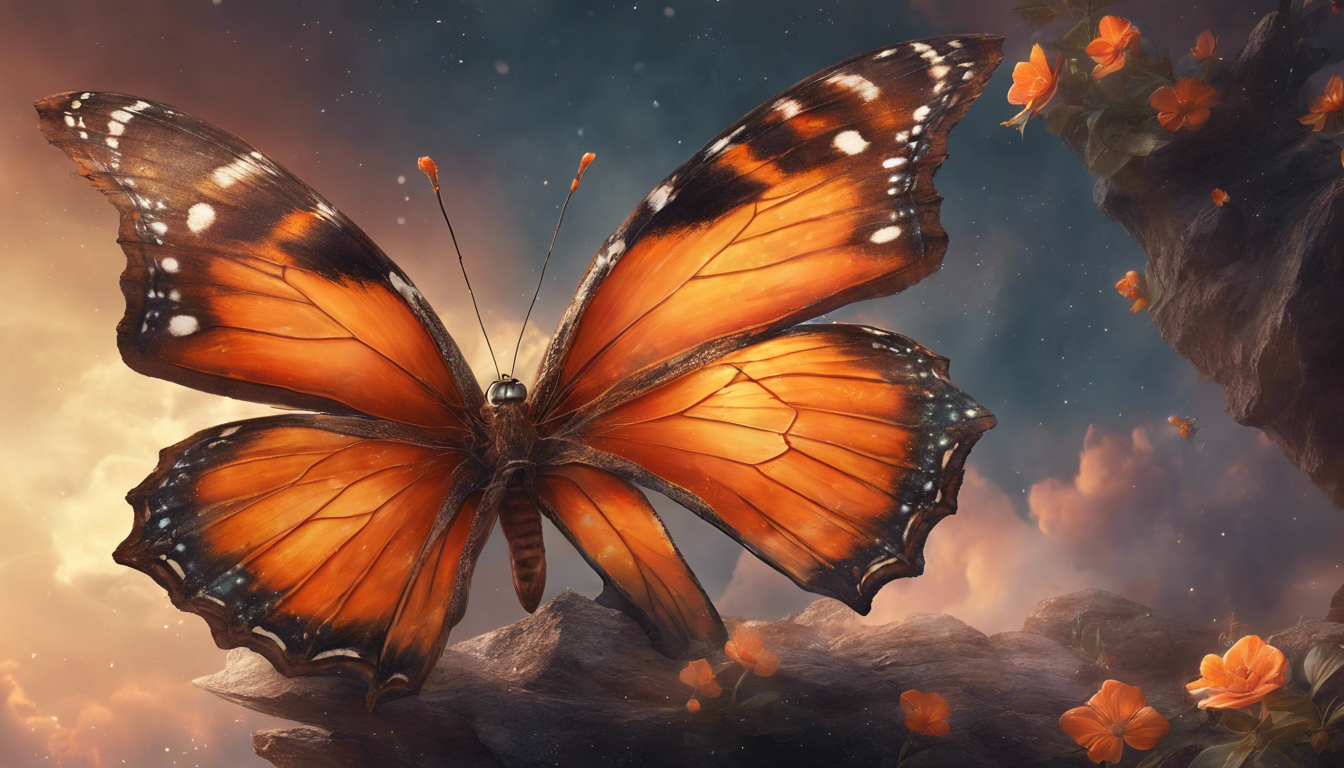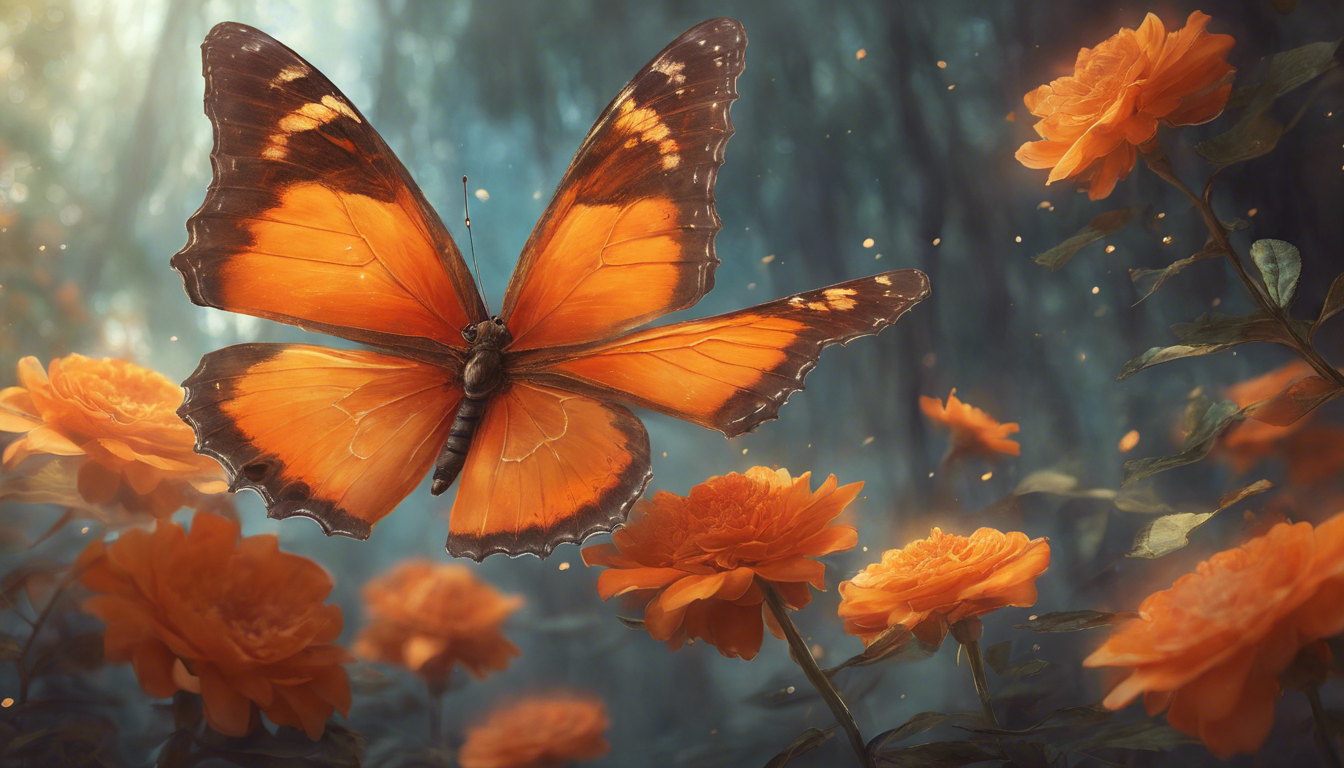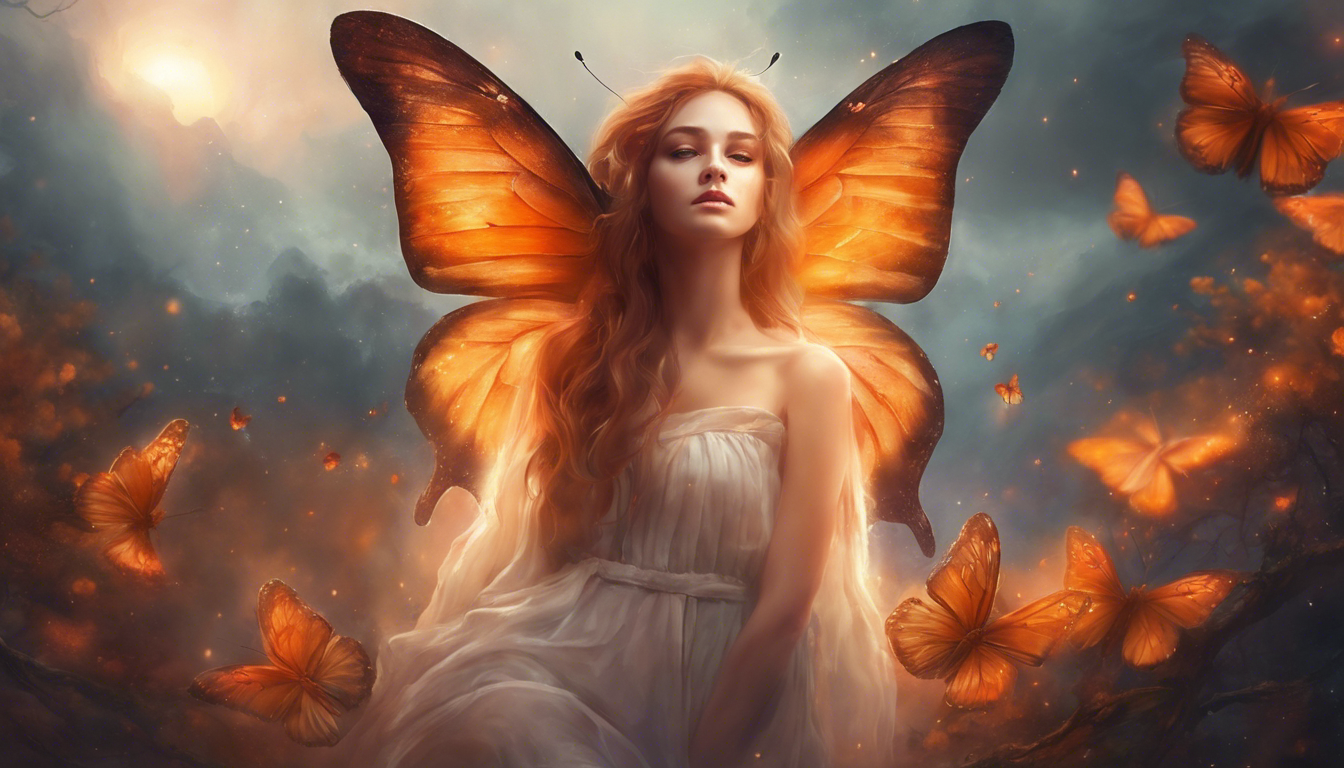The Importance of Color in the Natural World
Color is an integral part of the natural world, playing a significant role in various aspects of life on Earth. From vibrant flowers to majestic sunsets, color adds beauty, meaning, and functionality to our environment. Let’s explore the importance of color in the natural world and how it impacts our lives.
Attracting Pollinators
In the plant kingdom, color plays a crucial role in attracting pollinators such as bees, butterflies, and birds. Brightly colored flowers serve as visual signals, guiding these pollinators towards a source of nectar. Different flowers have evolved to display specific colors to better attract their preferred pollinators. For example, red and orange flowers are often visited by hummingbirds, while butterflies are drawn to vibrant colors like yellow and purple.
Furthermore, the specific colors of flowers can indicate their stage of development. For instance, white and pale-colored flowers are commonly found in the early stages of blooming, while brighter and more vibrant colors often indicate a flower that is ready for pollination. This strategic use of color in flowers ensures successful pollination and the continuation of plant species.
Camouflage and Warning Signals
In the animal kingdom, color serves a dual purpose of both attracting mates and offering protection through camouflage. Many animals, such as chameleons and certain insects, have the ability to change their color to blend in with their surroundings. This natural form of camouflage helps them hide from predators or become more inconspicuous when hunting.
On the other hand, some animals use bright and vivid colors as warning signals to ward off predators. For example, poisonous frogs display striking colors like bright red or yellow, indicating their toxic nature and discouraging predators from attacking them. The combination of color and warning signals helps these animals survive in their natural habitat.
The Role of Color in Ecosystems
Color also plays a vital role in maintaining balance and harmony within ecosystems. In the aquatic world, coral reefs exhibit a stunning array of colors, serving as both habitats and protection for many marine species. The different colors of corals are often an indication of their health, with vibrant colors representing a thriving ecosystem.
Additionally, color is used by many species for communication and mating purposes. Male birds, for example, often display vibrant and intricate plumage to attract potential mates. The striking colors act as a visual signal, indicating the male’s genetic fitness and ability to provide for offspring.
The Psychological Impact of Color
Color in the natural world not only impacts biological processes but also has a psychological impact on humans. Studies have shown that exposure to certain colors can affect mood, emotions, and even productivity. For example, the color green is associated with feelings of calmness and tranquility, while blue is often associated with a sense of peace and serenity.
Furthermore, the use of color in nature can have a therapeutic effect, promoting mental well-being and reducing stress levels. Walking through a colorful garden or enjoying a picturesque sunset can elicit feelings of joy, relaxation, and connection with nature.
The importance of color in the natural world cannot be understated. From attracting pollinators and offering protection to maintaining ecosystem balance and influencing human emotions, color plays a multifaceted role. So, next time you find yourself immersed in nature, take a moment to appreciate the vibrant hues that surround you and the incredible impact they have on our lives.
The Symbolism of Butterflies in Different Cultures

Butterflies have long been admired for their beauty and grace. Beyond their physical appearance, butterflies also hold deep symbolism in various cultures around the world. From representing transformation and rebirth to symbolizing the soul and love, these delicate creatures carry significant meanings in different parts of the globe.
1. Native American Culture
In Native American culture, butterflies are seen as powerful symbols of change and transformation. They are believed to be messengers between the physical realm and the spiritual realm. The colorful wings of butterflies are associated with the beauty and fragility of life.
For some Native American tribes, butterflies are also seen as a symbol of joy and happiness. The sight of a butterfly is believed to bring good luck and positive energy.
2. Chinese Culture
In Chinese culture, butterflies are often associated with love and romance. The Chinese word for butterfly, “hu-tieh”, is a homophone for the word “tieh”, which means “70 years”. Therefore, butterflies are often seen as a symbol of long-lasting love and marital bliss.
In addition, butterflies are also seen as a symbol of joy and freedom in Chinese culture. Their ability to effortlessly move through the air is seen as a representation of a carefree and happy life.
3. Greek Mythology
In Greek mythology, butterflies are associated with the soul and immortality. The Greek word for butterfly is “psyche”, which also means “soul”. According to the myth of Eros and Psyche, Psyche was transformed into a butterfly to be reunited with her love, Eros.
Butterflies also represent the idea of transformation and rebirth in Greek mythology. They are often depicted alongside the goddess of spring, Persephone, symbolizing the cycle of life and death.
4. Hinduism
In Hinduism, butterflies are seen as a representation of the soul and its journey through life. The intricate patterns on butterfly wings are seen as a metaphor for the complexities of life and the interconnectedness of all beings.
Butterflies are also associated with the goddess Saraswati, who is the Hindu deity of knowledge, arts, and wisdom. They are believed to be her companions, carrying messages of creativity and inspiration.
5. African Culture
In various African cultures, butterflies are seen as symbols of joy, transformation, and spirituality. They are often depicted in African art and are believed to bring luck and good fortune to those who encounter them.
Butterflies are also seen as messengers from the spirit world in some African cultures. Their vibrant colors and graceful movements are seen as a way for the spirits to communicate with the living.
Overall, the symbolism of butterflies in different cultures varies, but they consistently represent transformation, rebirth, and the beauty of life. Whether they are seen as messengers, symbols of love, or representations of the soul, butterflies hold a special place in the hearts and minds of people from various cultures around the world.
The Unique Characteristics of the Orange Butterfly

The orange butterfly is a truly mesmerizing creature that can be found in various regions around the world. With its vibrant colors and graceful flight, it is no wonder that the orange butterfly is a favorite among nature enthusiasts. In this article, we will explore the unique characteristics that make the orange butterfly stand out from its counterparts.
1. Vibrant Colors
One of the most striking features of the orange butterfly is its vivid and eye-catching coloration. The wings of the orange butterfly are predominantly orange, with intricate patterns and designs that make each individual butterfly unique. The combination of orange and black is truly a sight to behold and allows the butterfly to easily blend in with its surroundings. This vibrant coloration serves as a warning to predators, indicating that the orange butterfly is toxic and should not be consumed.
2. Symbolism of Change and Transformation
The orange butterfly is often associated with change and transformation. In many cultures, the orange butterfly is seen as a symbol of rebirth and new beginnings. Its metamorphosis from a caterpillar to a butterfly is seen as a powerful metaphor for personal growth and transformation. This symbolism makes the orange butterfly a powerful symbol in spiritual and emotional contexts.
3. Elegance in Flight
When in flight, the orange butterfly displays a remarkable level of grace and elegance. Its movements are smooth and effortless, as if it is dancing through the air. This elegance in flight is accentuated by the contrast between the vibrant orange wings and the blue sky, creating a breathtaking spectacle for onlookers.
4. Habitat and Migration
The orange butterfly can be found in various habitats, including meadows, gardens, and forests. It has a diverse range and can be found on every continent except Antarctica. During migration, orange butterflies travel great distances in search of suitable breeding grounds. This impressive migration pattern showcases the resilience and adaptability of this beautiful insect.
5. Pollination and Importance in Ecosystems
Like other butterflies, the orange butterfly plays a crucial role in pollination. As it feeds on nectar from flowers, it inadvertently transfers pollen from one plant to another, facilitating the reproduction of plant species. This process is essential for the maintenance and diversity of ecosystems. Without the orange butterfly and other pollinators, many plant species would struggle to survive.
In conclusion, the orange butterfly possesses unique and distinctive characteristics that set it apart from other butterflies. Its vibrant colors, symbolism, elegant flight, habitat, and role in pollination make it a fascinating creature to observe and appreciate. The orange butterfly serves as a reminder of the beauty and wonder that exist in the natural world, and the transformative power of change. So, next time you come across an orange butterfly, take a moment to marvel at its uniqueness and reflect on the deeper meanings it represents.
The Fascination and Beauty of the Orange Butterfly

The Elegance of the Orange Butterfly
Few sights rival the delicate beauty of an orange butterfly fluttering gracefully through a summer garden. With its vibrant orange wings adorned with intricate patterns, the orange butterfly is a true marvel of nature’s artistry. Whether you encounter it in the wild or catch a glimpse of it in your own backyard, the orange butterfly never fails to captivate and inspire awe.
A Symbol of Transformation
Butterflies, in general, hold great symbolic significance across various cultures and spiritual beliefs. They are commonly associated with transformation, rebirth, and spiritual growth. The orange butterfly, in particular, represents joy, enthusiasm, and a sense of adventure. Its vibrant color and graceful flight remind us to embrace change, let go of the past, and welcome new beginnings.
The Life Cycle of an Orange Butterfly
To fully appreciate the beauty of the orange butterfly, it is essential to understand its life cycle. Like all butterflies, the orange butterfly undergoes a remarkable metamorphosis from egg to larva (caterpillar), then pupa (chrysalis), and finally emerges as a magnificent winged creature. This process symbolizes the transformative journey we all go through in life.
The orange butterfly begins its life as a tiny egg, usually laid on the undersides of leaves. Soon, it hatches into a caterpillar, which voraciously feeds on plant leaves to nourish itself. As it grows, the caterpillar sheds its skin several times before transitioning into a chrysalis. Inside the chrysalis, a profound transformation occurs, leading to the emergence of the adult butterfly. This remarkable transformation mirrors our own personal growth and development.
Attracting Orange Butterflies to Your Garden
If you wish to witness the beauty of orange butterflies up close, you can create an inviting habitat for them in your garden. Here are a few tips to attract these enchanting creatures:
- Plant nectar-rich flowers such as butterfly bush, marigold, zinnia, and milkweed.
- Provide a water source, such as a shallow dish with pebbles for them to perch on.
- Avoid using pesticides or chemicals that may harm butterflies.
- Plant host plants like milkweed, which is essential for orange butterfly larvae.
By incorporating these elements into your garden, you can create a haven for orange butterflies and other pollinators, enhancing the beauty of your surroundings and supporting biodiversity.
The orange butterfly showcases the splendor and cyclical nature of life. Its vibrant orange wings symbolize joy, enthusiasm, and transformation. By understanding the life cycle of the orange butterfly and creating an inviting environment in our gardens, we can foster a deeper connection with nature and witness the ever-present beauty of these magnificent creatures.


Article written by Dera
Greetings, I am Dera, a 35-year-old individual with a deep passion for spirituality. Through my website, I aim to share my insights and knowledge to help others on their spiritual journey. Join me on the path to inner peace and enlightenment.